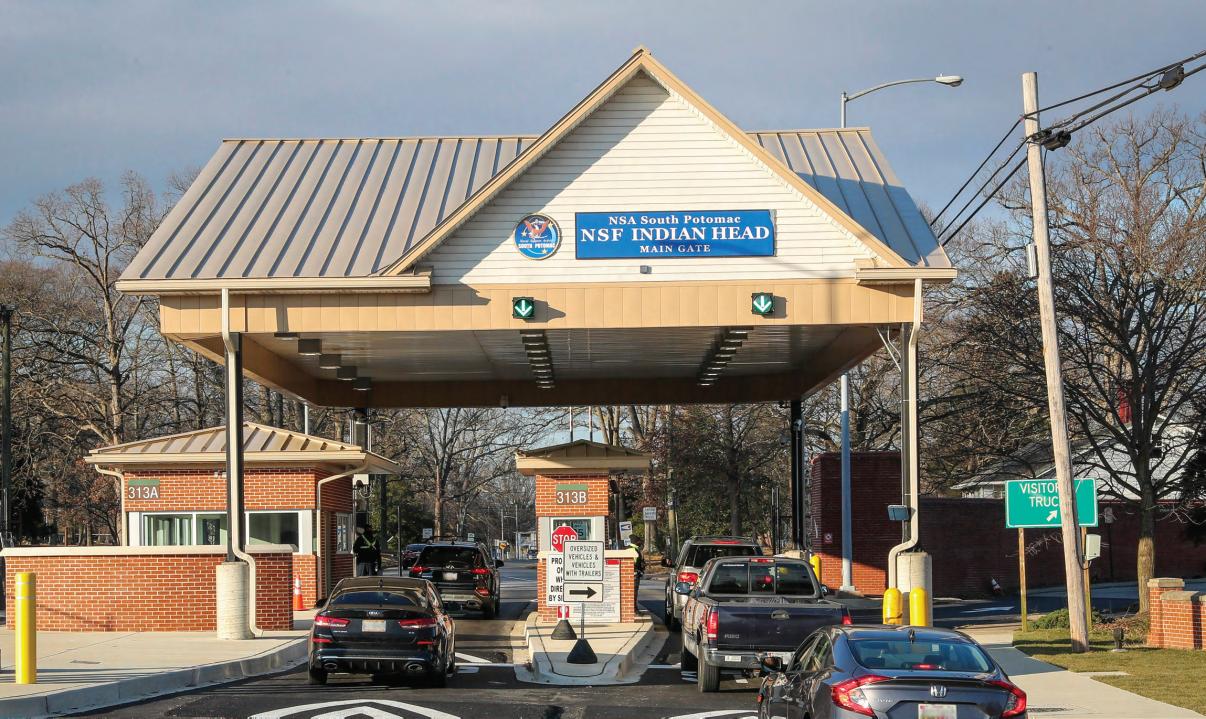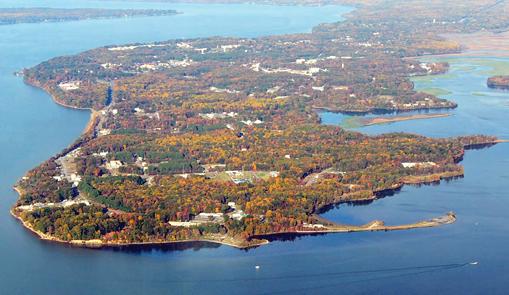
4 minute read
Our Military
NAVAL SUPPORT FACILITY INDIAN HEAD
The western Charles County Town of Indian Head is home to the Department of Defense (DoD) Naval installation, Naval Support Facility Indian Head. The base houses tenant commands involved in a diverse and strategically important mix of research and development and manufacturing activities as well as programs serving the U.S. Navy, Marine Corps, Air Force, and Army forces deployed worldwide.
Advertisement
In addition to its military value, the Indian Head Navy installation makes a significant economic contribution to the local community by serving as one of the County’s largest employers. Established in 1890 as the Naval Proving Ground, today the installation is DoD’s research and development center for energetics technology as well as ordnance detection and disposal, micro-electronicmechanical systems, and nanotechnology. The base is a multi-military facility housing the Naval Surface Warfare Center Indian Head Division (NSWC IHD) as its largest tenant. The base also hosts the Chemical & Biological Incident Response Force (Marines), other military support activities, and numerous defense subcontractors and support units. Active employment at the base is approximately 3,834 military, civilian, and support personnel. For fiscal year 2020 the naval base generated over $355 million funneled directly into the local economy in the form of civilian and military payroll dollars and an additional $571 million in total contracts.
MAJOR COMMANDS AT NSF INDIAN HEAD
The Naval Surface Warfare Center Indian Head Division (NSWC IHD) is the principal Energetics Center for the DoD. The command’s mission is to provide research, development, test and evaluation, and in-service support of energetics and energetic materials. As the largest DoD full spectrum energetics facility and leader in the Navy's energetic enterprise, NSWC IHD employs a workforce of over 2,200 (federal, military, and contractors), of whom more than 800 are scientists, engineers and technicians more than 50 holding doctorates dedicated to every aspect of developing and sustaining explosives, propellants, pyrotechnics, high energy chemicals and their application into war fighting systems. NSWC IHD performs over 60 percent of all Navy energetics workload.
NSWC IHD also works on eliminating the hazards from unexploded ordnance that jeopardize U.S. military and related operations and is the DoD center of knowledge and expertise on all explosive threats including counterexplosive hazard research, development, testing and evaluation; special tool and equipment development for detection and defeat; comprehensive threat database; development of tactics, techniques, and procedures; and real-time technical support to EOD responders. The command also operates a wide variety of state-of-the-art facilities such as a robot range, foreign ordnance electronics exploitation laboratory, magnetic signature test facility, ordnance disassembly complex, radiography and photography laboratories, explosive test ranges, hypervelocity test facility, and EOD diver complex.
NSWC IHD is the only command to have received Center for Industrial and Technical Excellence (CITE) designation as both an arsenal and a depot. CITE is a statutory authority that allows the command to enter into public/private partnerships to perform work under their core competencies-energetics, ordnance, naval gun systems, EOD technologies, ordnance packaging, handling, storage and transportation and the technical expertise required to acquire, maintain, and sustain the systems.
Expeditionary Exploitation Unit One:
In July of 2018, Expeditionary Exploitation Unit ONE (EXU-1), an attachment of Naval Surface Warfare Center Indian Head Explosive Ordnance Disposal Technology Division, was established as a stand-alone command. The detachment became a part of NSWC D in 2006. With this new status, EXU-1 became an Echelon V Command.
The unit currently employs 137active military, civilian, and contractor personnel. EXU-1 assists on missions ranging from mine countermeasure operations, surface and underwater post-blast investigations, special operations forces targeting, electronic engineering and forensic exploitation, advanced radiography and ordnance disassembly, and technical intelligence reach-back functions. It is a one-of-a-kind command within the Department of Defense.
Naval Ordnance Safety and Security Activity (NOSSA) was established on Oct. 1, 1999 to manage and administer U.S. Navy explosives safety programs to include ammunition and explosives safety and security; weapons, platforms and combat systems; ordnance environmental support; insensitive munitions; ordnance quality evaluation; and arms, ammunition and explosives (AA&E) physical security.
U.S. Marine Corps Chemical Biological Incident Response Force (CBIRF) responds to hazardous material incidents involving the use of chemical, biological, radiological, or nuclear explosive (CBRNE) weapons of mass destruction. CBIRF assists local, state, or federal agencies and designated commanders in post-incident mitigation by providing agent detection and identification; casualty extraction, extrication, and decontamination; and emergency medical care and stabilization of contaminated personnel. CBIRF Marines also support the United States Secret Service during high-profile events such as the President’s annual State of the Union Address. More than 500 Marines from more than 40 military occupational specialties train to complete those missions. The unit is equipped with six major sections, including Explosive Ordnance Disposal, Technical Rescue Decontamination, Identification Detection Platoon (IDP), medical, and casualty extraction.
Naval Facilities (NAVFAC):
In order to allow military tenants to focus on core missions, Naval Facilities (NAVFAC) manages the installation and its physical assets – land, buildings, and infrastructure – under the Command of Naval Support Activity, South Potomac Division.









